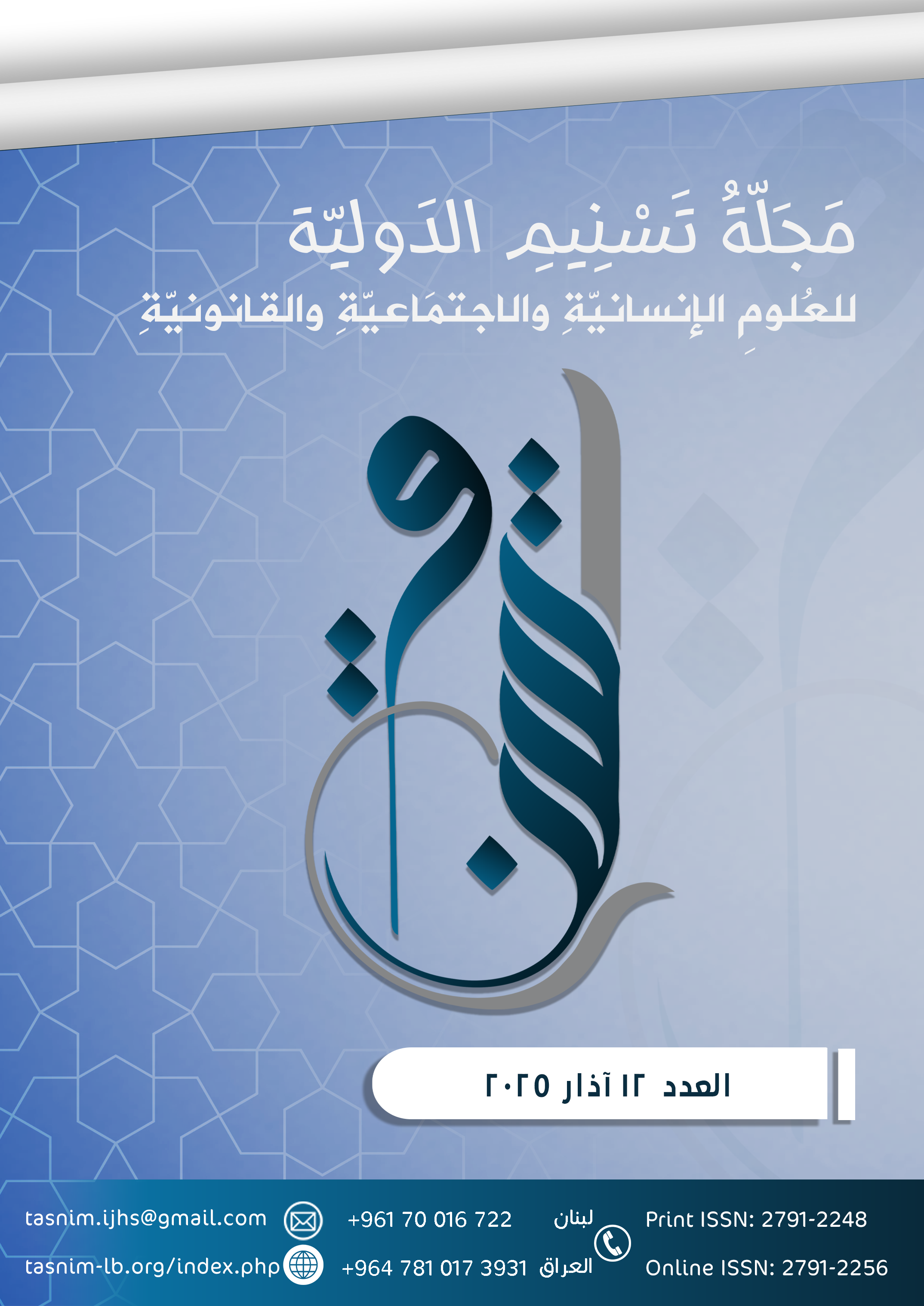الزوجة في عقد النكاح بين الفقه والواقع
Abstract
The study analyzes the artistic portrayal of criminals in the Quran through rhetorical devices such as verbs (e.g., lying, arrogance), nouns (e.g., criminal attributes), and particles (e.g., "ma" and "lām"). It highlights how these tools reflect the psychological and social behavior of criminals, drawing on interpretations by scholars like Al-Zamakhshari and Al-Qurtubi. Additionally, the research addresses women’s rights in Islam and their familial roles, citing Prophetic Hadiths and juristic opinions (e.g., Al-Bukhari, Ibn Qudamah), emphasizing marital cooperation and rejecting the reductive view of women as mere "servants."
Downloads

Downloads
Published
How to Cite
Issue
Section
License
Copyright (c) 2025 Tasnim International Journal for Human, Social and Legal Sciences

This work is licensed under a Creative Commons Attribution-NonCommercial-NoDerivatives 4.0 International License.





